03.02.2020
The Modified Pathing Cypher
In this writeup, I will show you a runic cyphertext concept that lends itself well to D&D puzzles. It is rotation invariant, scale invariant, mirroring invariant, easily customizable, beautiful, and has multiple options for every latin character.
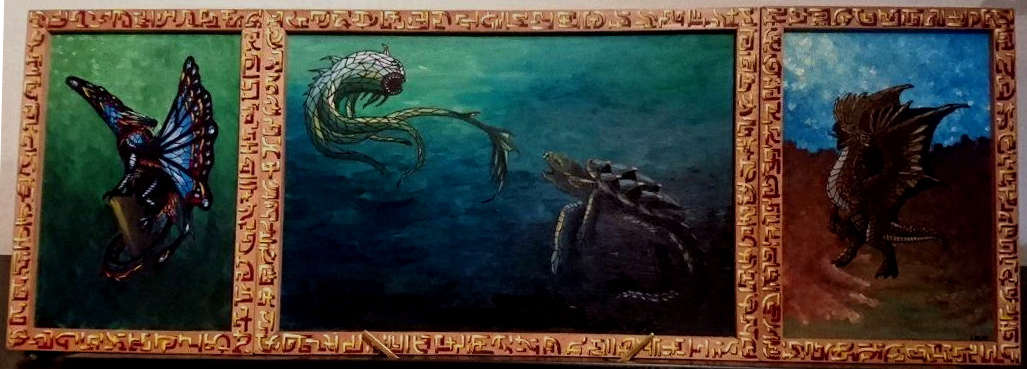
If you just care about the system, skip to the bottom. If you'd like to hear a story, keep reading.
Origins
A year ago, u/Dclone2 presented his cipher on r/DMToolkit and on youtube (now unavailable). Accompanied were his explanations by beautiful examples such as this one spelling ROASTED:
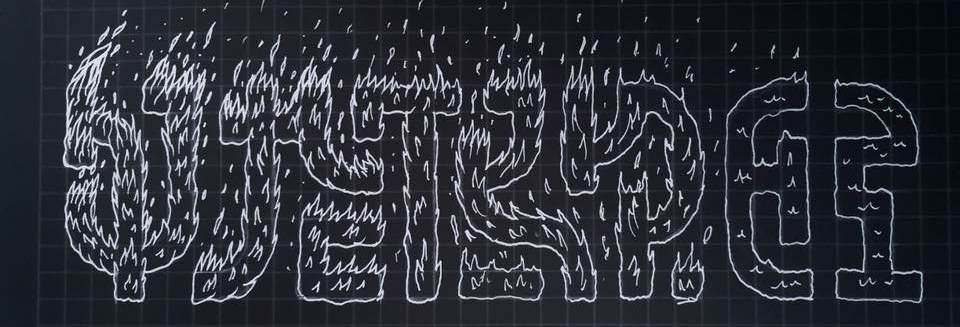
And this example says GUARDED:
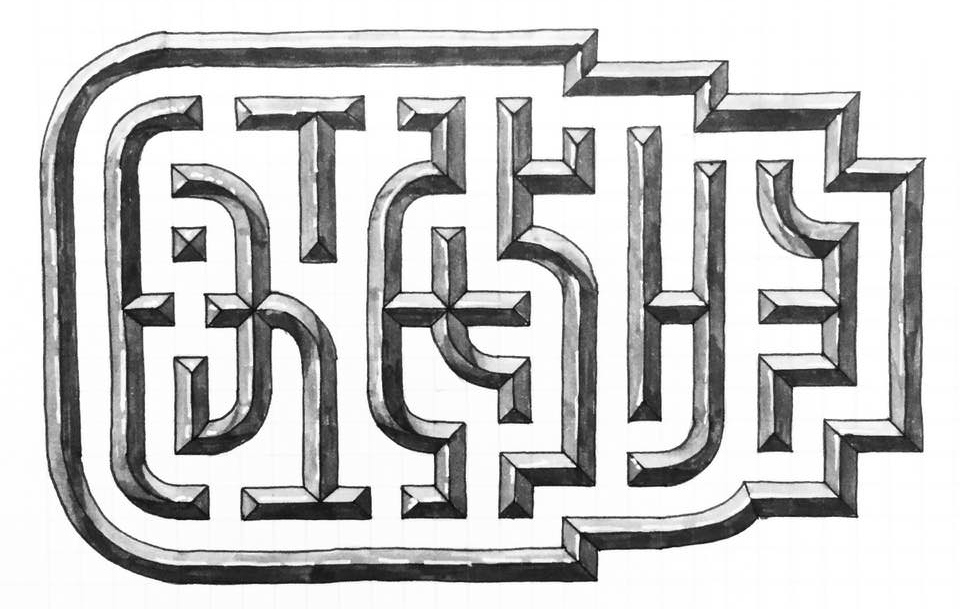
Very clearly was this a wonderful challenge. Not only does it look beautiful, the system also has several ways of writing the same latin character. That means it won't result in the same kind of puzzle that every player already knows.
However beautiful it is though, I doubted that it's solvable without having a whole campaign around it. So I started tweaking it.
That's what DM'ing is - creating derivative works so that it suits the players. And I hope my work will inspire you as well.
Modifications
My goal was to create a puzzle that would be solvable without major introduction. It should also be independent of certain assumptions, like whether you start counting from zero or one.
The original cipher was constructed using three criteria and some math to compute the fourth. u/Dclone2 cleverly built a lookup table for that. I got rid of the math, because math requires counting in a specific way. In order to do that, I constructed a new lookup table - in three dimensions.
I've run several iterations of my version by different friends to test it. One friend almost managed to solve it, in about two hours. But almost solving a puzzle is frustrating. Finally the puzzle was ready to be placed inside my game. And my group of four smart and puzzle-happy players were puzzling for 2-4 hours after they had all the necessary information, depending how you count.
A story
We were playing storm king's thunder, but you could easily use that puzzle in any campaign. It just so happened, that I could make use of them as giant's runes.
A three-sided monolith made of black obsidian glistens in the faint moonlight in the middle of a forest that you experienced as dense while making your way through it. But here, around the monotlith, there is enough free space to see up to the faintly clouded sky. Misty steps made of clouds circle around the sharp monolith and as you step closer you notice signs engraved into each side of it. The moonlight eerily reflects on their sharp edges.
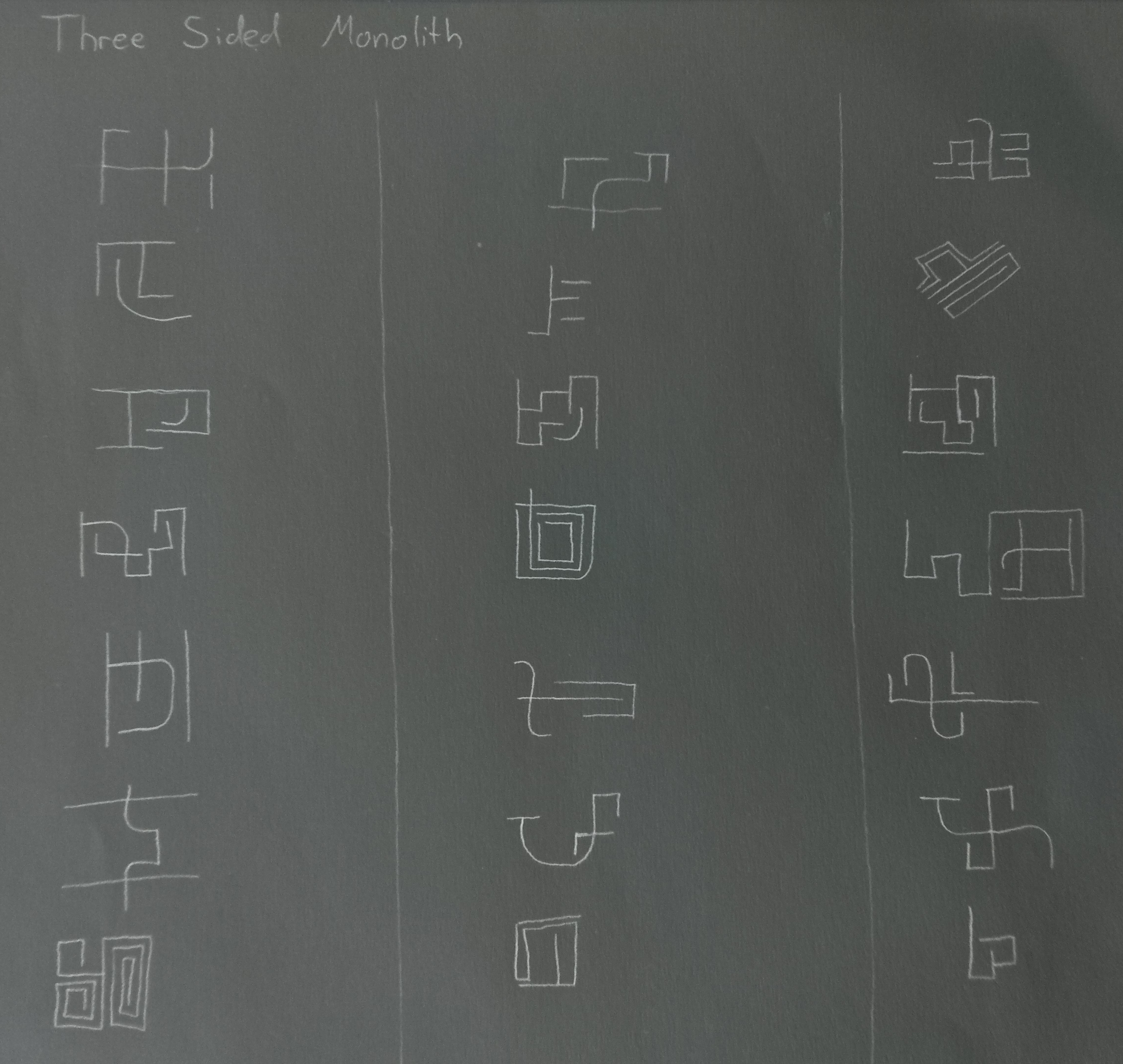
Of course, the players take a while to cautiously look around. And once they're close, of course the monk walks straight to the monolith and tries to unearth it, then hears somebody worry about the clouds that could be poisonous and decides to stick his arm into them, only to hurt his fingers. Okay, that may or may not have happened like this, but at some point the players figure out that the stairs can be actually walked upon.
Gradually decreasing the distance between yourself and the stars, you make your way around the ages old skyscraper. Above you, the monolith and the stairs disappear into the single cloud hanging on the sky. After you climbed about two thirds up the stairs, you come upon a niche in the dark stone. Its edges just as clean cut as everything else about this thing. And within it lies a dark something in the shape and size of an ostrich's egg. It's hard to notice in your own shadow, but it, also, has runes etched into its surface. They build a thin band of signs that wrap around the orb; the same sequence ever repeating.

A magically gifted adventurer might be able to determine that something is magical about this thing. Perhaps, it is a voice-activated relic of old times?
The stairs end in the clouds. Literally. You emerge from the mist and step onto the cloud that you saw from the ground. It's a quite small cloud, but that is not the most unusual thing about it. Before you stands a cloudy tower in all its might, way higher than the towers you have seen before. Screeching griphons surround its peak, and before it on a rock-shaped ball of cloud is a huge being sitting. You have heard the tales of giants.
The players find out in conversation that the giant had a vision that told him to wait for the ones mentioned in the prophecy. To wait at the Pillar Of Ostoria, a relic of the time when giants ruled the world. A relic, that was supposed to have OSTORIA written on it on three sides.
But the giant did not find this thing. Perhaps the visions meant the monolith here, which also has three sides which do indeed have writing on them, although the writing was by long-passed giants and nobody today knows how to read and translate them.
Luckily, one of the players knows giant, so only decyphering is the issue here.
They start thinking, puzzling, trying, discarding, refurbishing... and after some insights, they realize that the information they have is quite sparse. I won't tell the story of how they found the other relics and notes, but here are some:
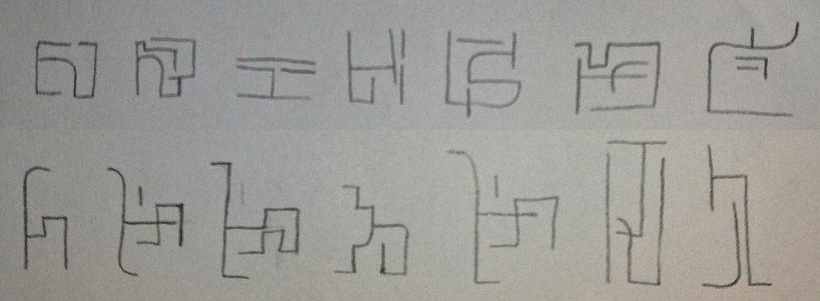
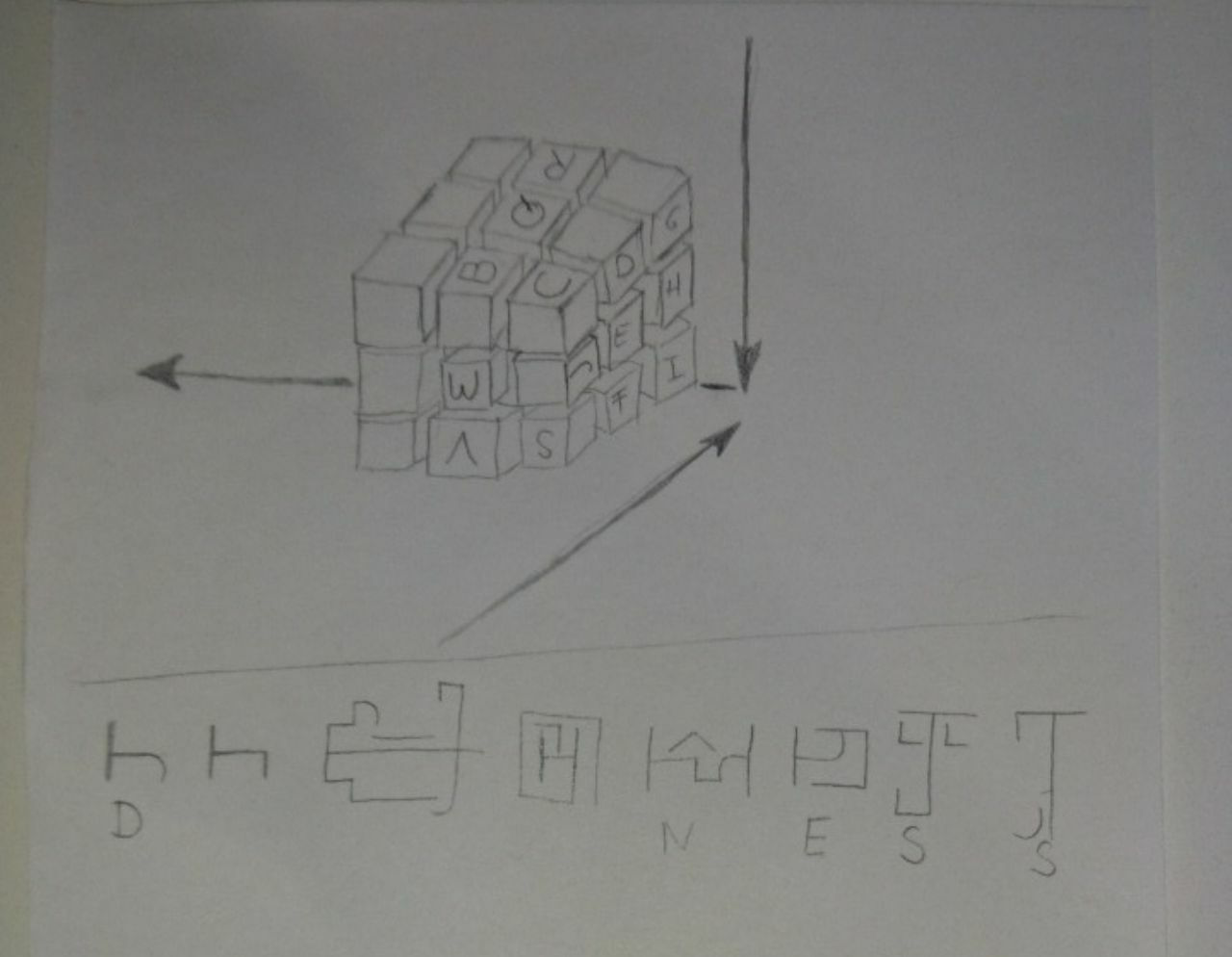
Yes, they had to solve the cube first. But that were only three rotations. In the video it is already in solved state.
I had some additional help ready in case they'd need it. Some notes that show multiple examples of the same character and a different character that is similar (of course with annotations which is which).
Something the players did not find yet is this Scroll. After photographing it, I crumbled it and colored it with coffee. I can recommand that, but it makes the runes a bit harder to read - good enough to see in real life, but not ideal for this post.

Okay cool, but how does it work?
The Bottom
Abstractly
Take the latin alphabet. A to Z and the space character. That is 27 characters.
27 = 3*3*3 characters fit nicely into a cubic table.
Make up three scalar criteria. Each criterium represents one axis in the 3D-table and needs to have three distinct steps. Ideally, the criteria are all rotation-, scale- and mirroring-invariant.
Specifically

Criterium 1: Any runic character must contain either a T shape, a H shape, or a |-|- shape. It is not legal for a rune to have more than one of these.

This criterium will make up the vertical axis of our table.
Note that this system could support more characters by introducing e.g. a shape of the form |-|-| as a fourth step on this axis.
In the system I used, above characters would be an A, B, C
Criterium 2: Any runic character must contain either 0, 1 or 2 90° curves attached to the line of criterium 1. Note that only curves are relevant here - right angles do not matter.

In the system I used, above characters would be an A, D, G
Criterium 3a: Any runic character can have either 0, 1, or 2 free-floating parts close to it. I refer to those parts as floaties and they are not allowed to contain any shape that criterium 1 specifies. That is, they must never have more than one way to go towards.
Criterium 3b: Because we like artistic expression, criterium 3a does not quite give us enough distinct options. So we add that: If you take a valid rune and replace two straight (or only consisting of right angles) floaties with a floatie that contains one 90° curve, it still corresponds to the same latin letter.

In the system I used, above characters would be an A, J, S. As would the below:

Word Boundaries: I had no need for spaces during the campaign, since I separated words physically. E.g. by placing them on different sides of an amulet. However, they are available as the 27th character: two floaties, two curves, and a |-|- shape.
How My Players Solved It
They quickly realized that the number of runes matched the number of latin characters of the words They found five criteria that could possibly have an impact on the meaning of each runic character. Then they made a table in which they represented each latin character as a set of numeric values.
E.g. criterium 2 from above could either have numeric value 0, 1, or2. But that is because I counted the number of floaties. If the players count the number of distinct lines, the possible values become 1, 2 or 3 instead. So it was a good idea to not involve as much computation, as the original version did - although I am positive that my players would have figured even that out eventually.
My criterium 3 is a tricky one, because of the whole curve-or-two-lines thing. That is among the reasons why they had more than 3 criteria.
They then took their table and somehow figured out a way to combine some of their criterion values by adding or multiplying them, subtracting a constant number from the result and other black magic. It was amazing to stand there, testing their formulae in my head, and realizing that it was actually correct. And I think it was about as amazing for them to realize that.
Also, they were quite bamboozled by the fact that I could quickly determine whether I drew a rune correctly - that's where my visual, three-dimensional approach shines for me personally!
Artwork
The DM Screen I inserted as an introductory image is framed with runes that fit into this system - although to be painted they had to be simpler than the ones I used on paper.
I am incredibly impressed by the skill, drive and time it must have taken to create this wonderful piece of art. The runes on it spell three quotes of the PHB and DMG - slightly truncated where necessary.
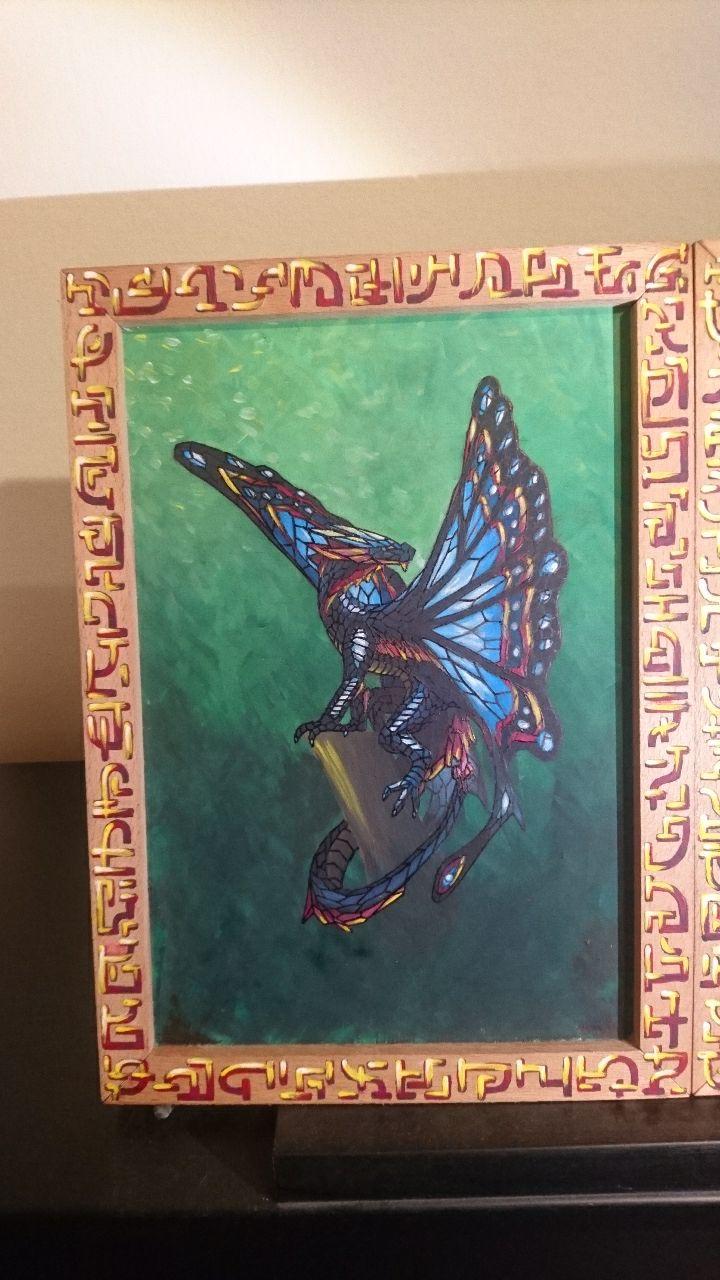
The Dungeon Master describes the environment
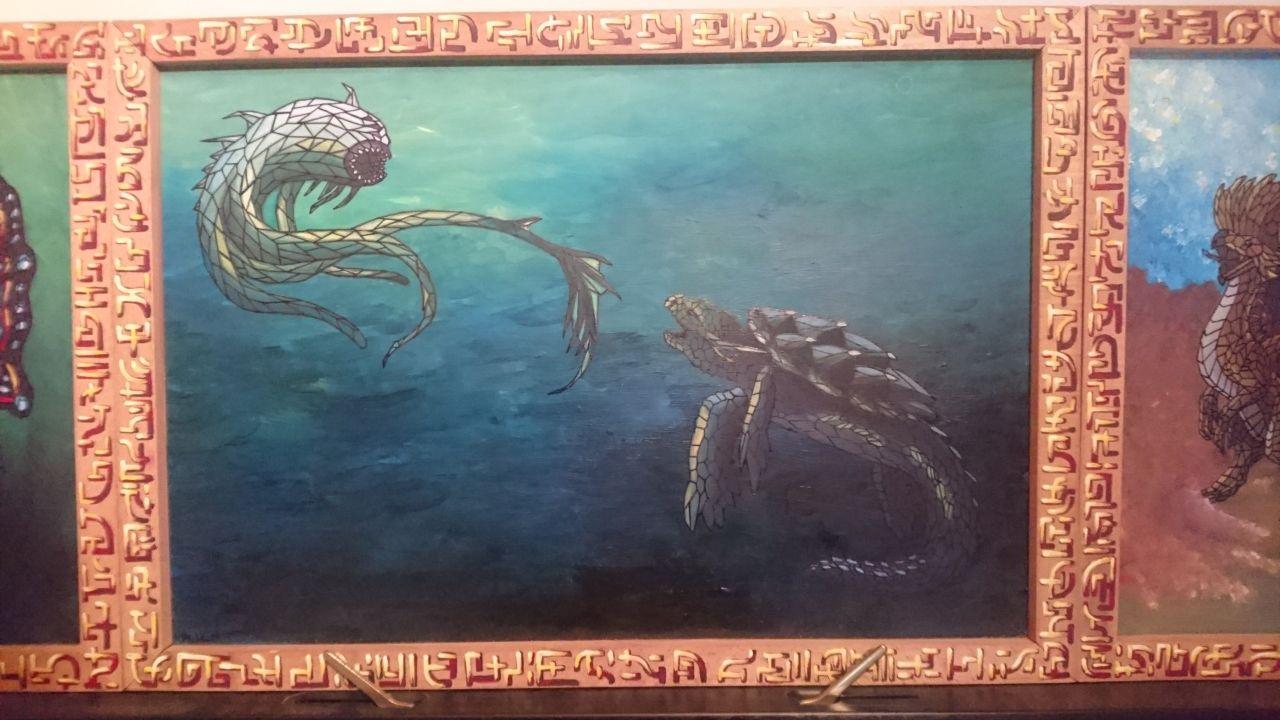
The rules help you have a good time but the rules are not in charge
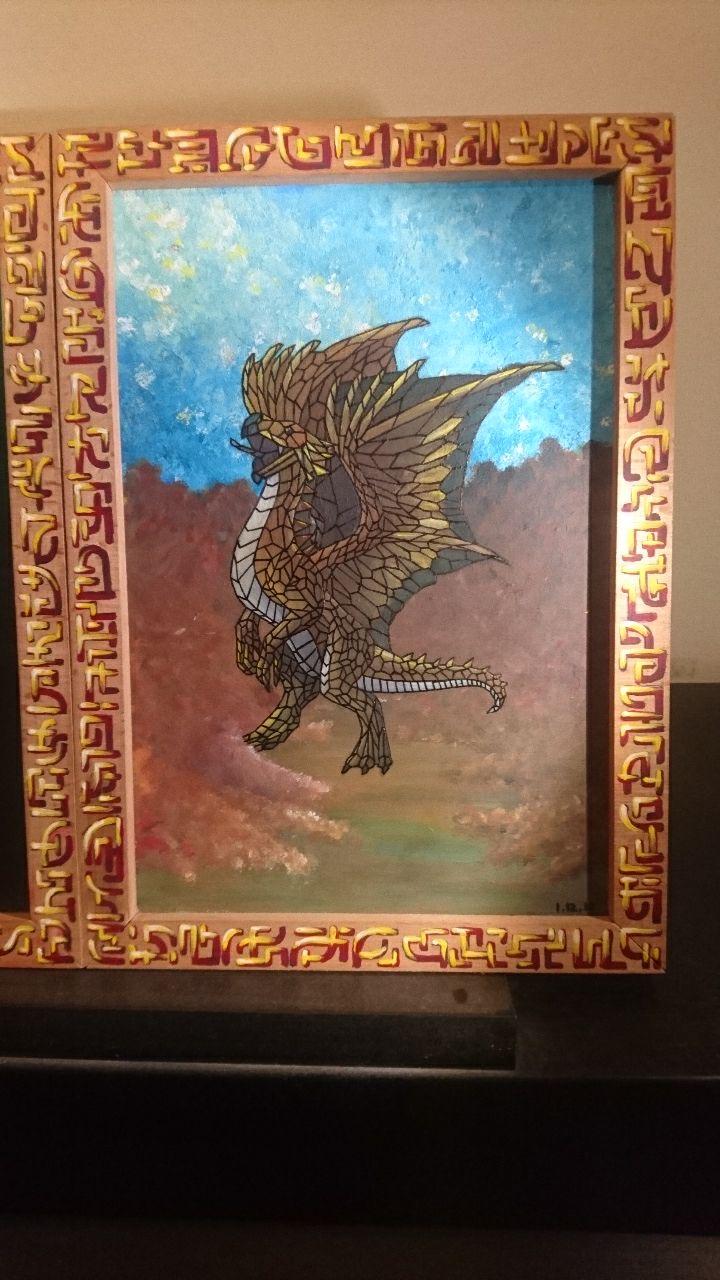
Ultimately the dungeon master is the authority
Discussion
Discuss this post on reddit or tag me on twitter (@lucidbrot)